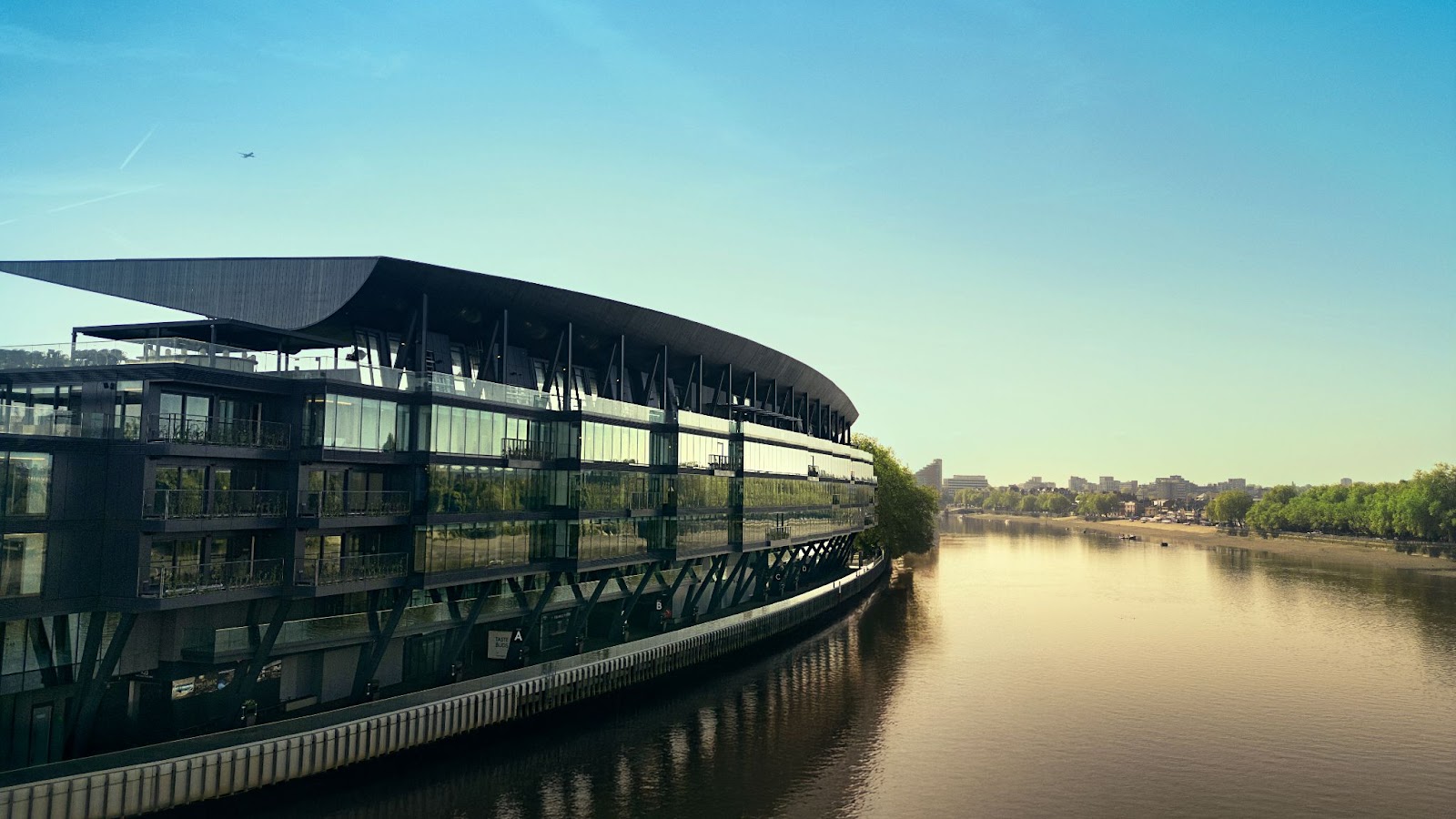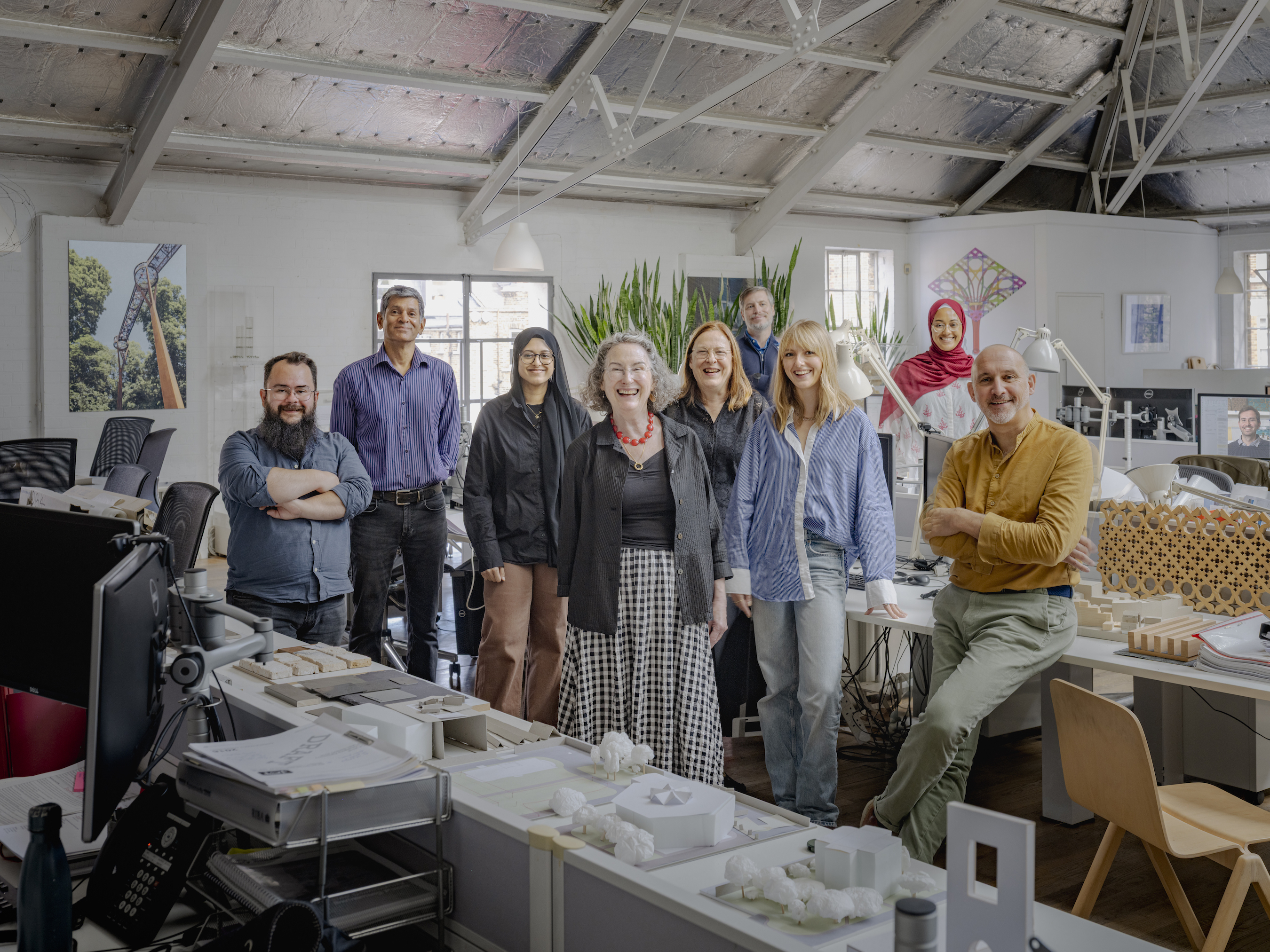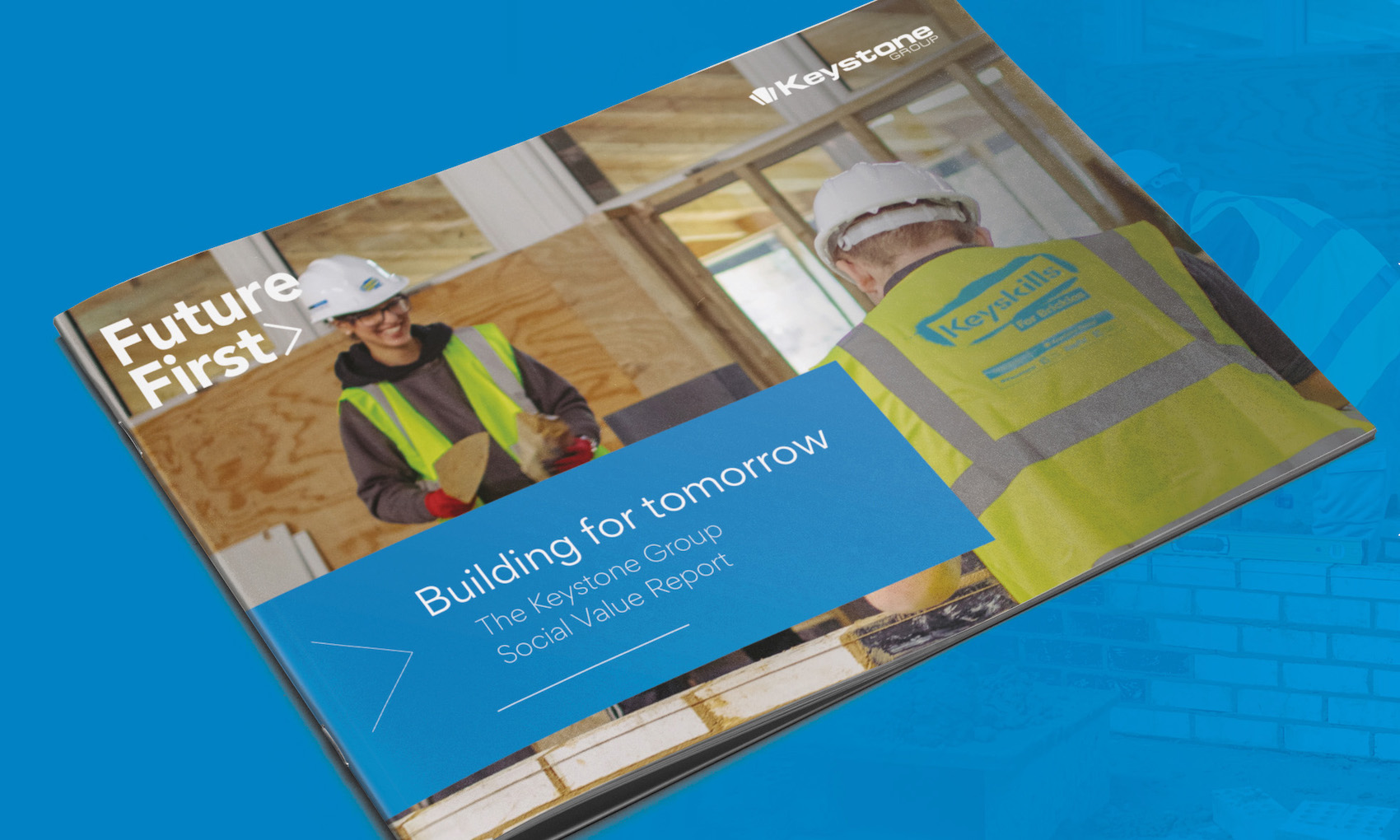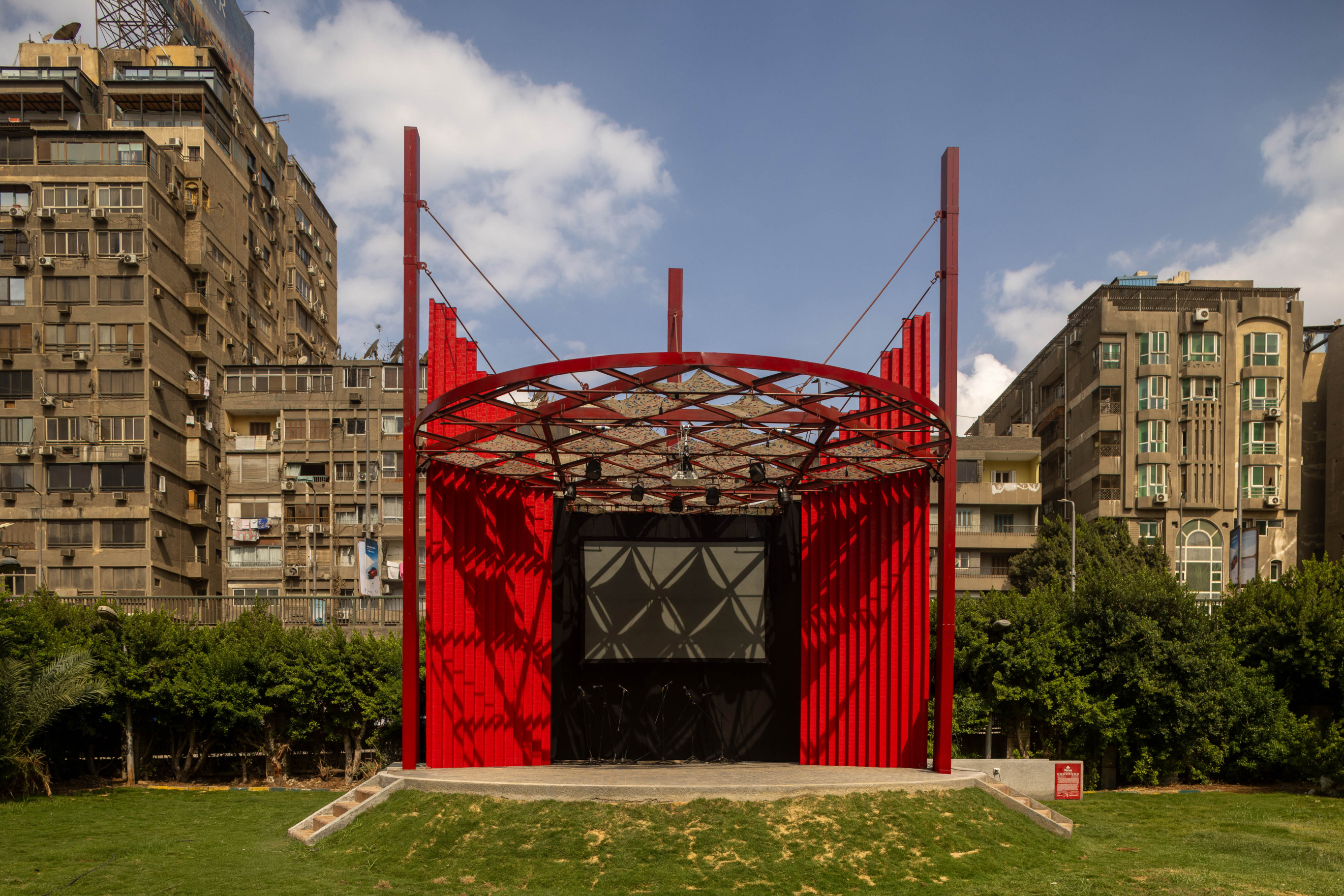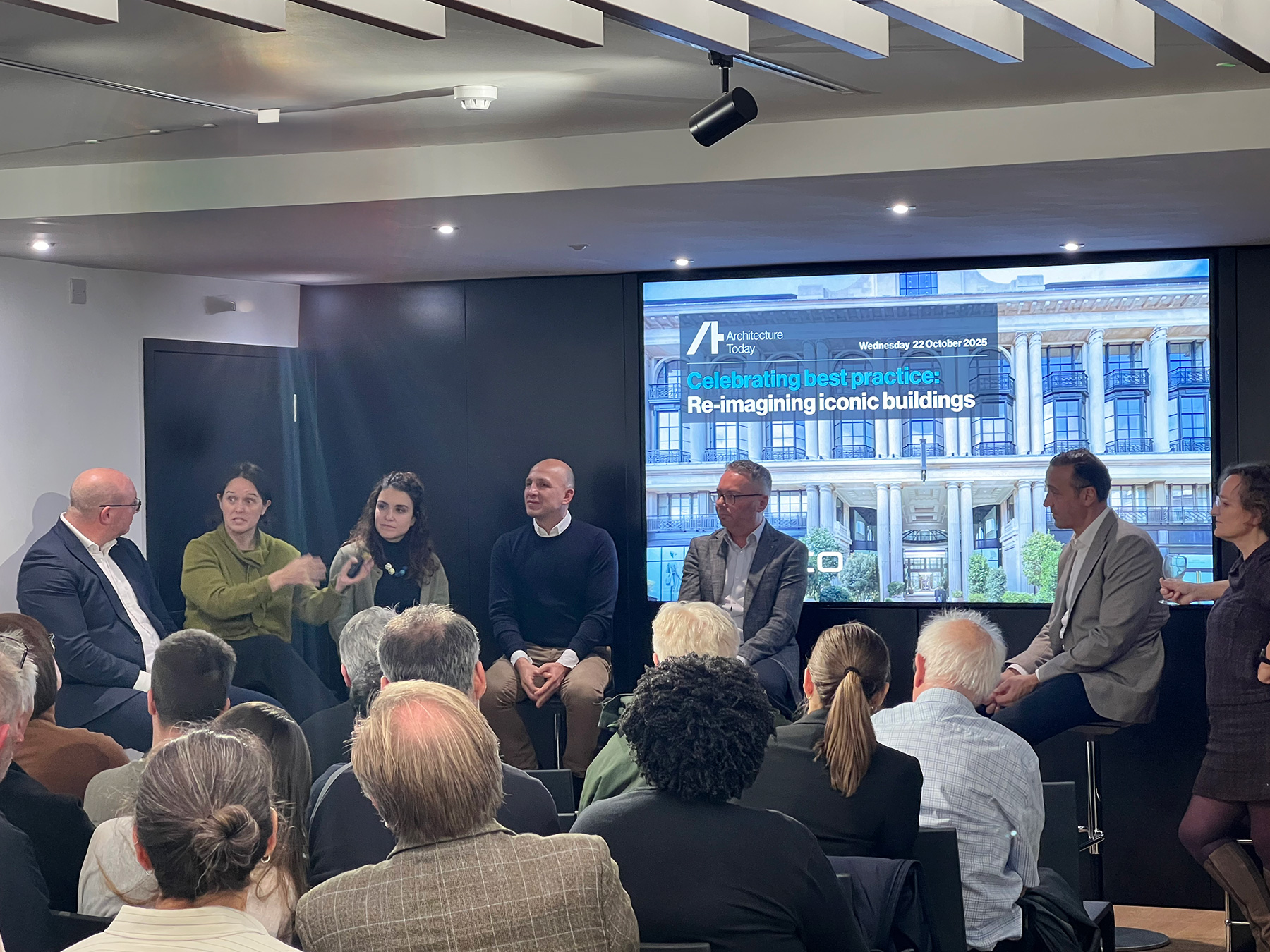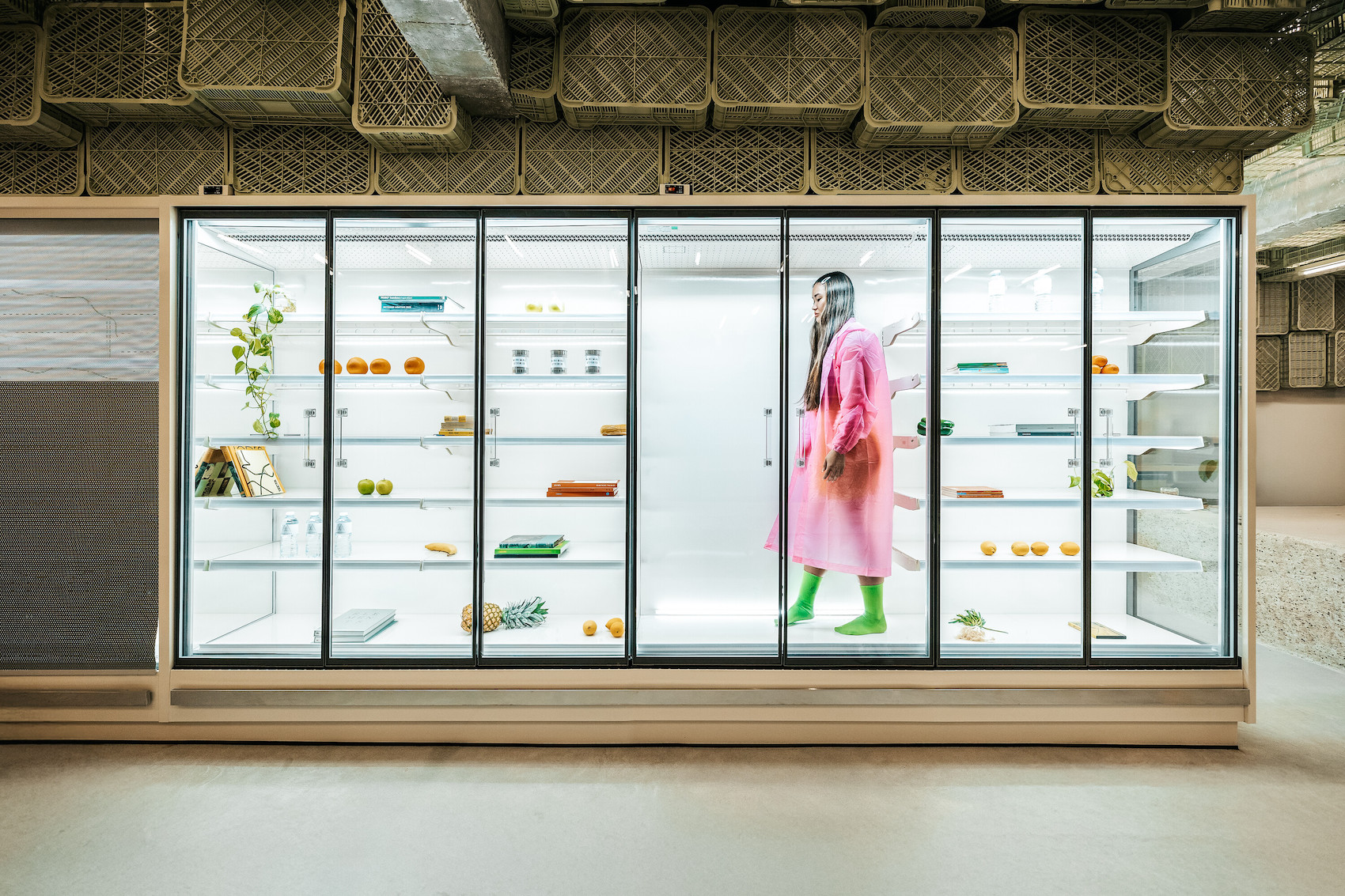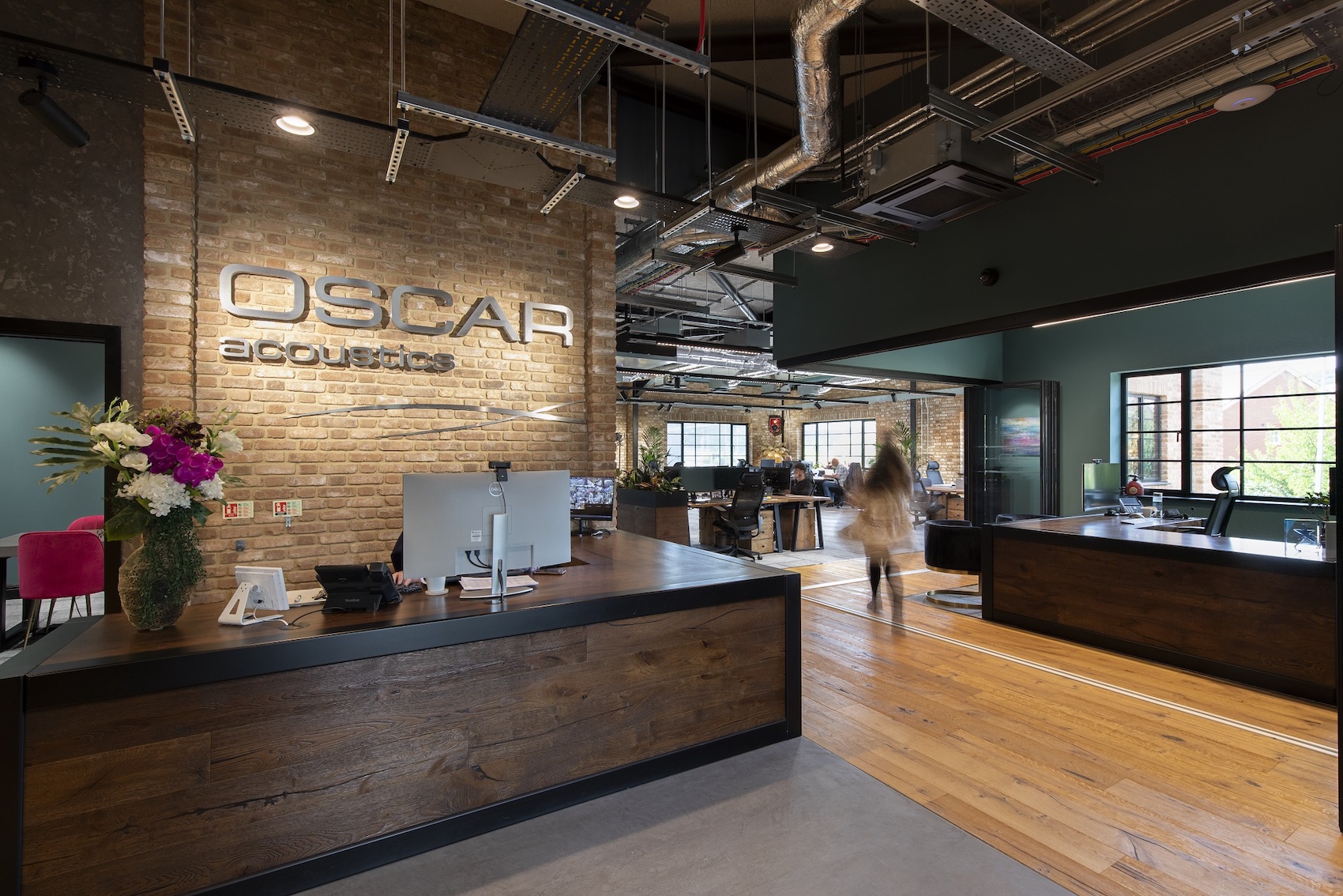Populous has completed Fulham Pier, Fulham FC’s new riverside stand that opens up a new pathway along the River Thames and strives to be a luxury destination beyond match days.
Opposite London’s oldest football stand is now London’s newest.
On Stevenage Road in London SW6, Scottish architect and engineer Archibald Leitch’s stand for Fulham Football Club hosted its first game in 1905. Leitch was a prolific stadium architect and was responsible for more than 20 stadia across the UK and Ireland between 1899 and 1939. Along with designing stands and grounds for Arsenal, Liverpool, Everton, Celtic, Aston Villa and many other household clubs, he also produced an unusually kitsch cottage pavilion to work in sync with Fulham FC’s modern, highly functional stand.
Both structures are now listed and the latter, today a typology most unlikely to be found in a stadium setting, gives Fulham’s ground its name: Craven Cottage.
What can be found opposite Leitch’s work is something which attempts to do, in many ways, the opposite of what Leitch set out to achieve over a century ago. While Leitch was ruthlessly efficient in making stands machines for getting as many fans in as possible – with little focus on much else – Populous, the architect behind Fulham’s latest stand and with its offices just down the road in Putney, has tried to deliver a piece of architecture that is just as useful for those not going to the game as for those who are.
View from the new stand looking over the old Johnny Haynes Stand and onto Central London.
What use is a football stand that doesn’t prioritise football fans? you might wonder. The answer is linked to site and commercial enterprise.
Populous’ new stand replaces the old “Riverside Stand”, looking out onto the Thames — and this new relationship with the river is the cornerstone of the project and arguably its biggest success.
We’ll start with the project’s immediate boundary with the Thames: Before opening, this slim portion of land between stadium structure and the river had been reserved only for those going to a game, with it being out of use for most of the year besides on match days and during events.
Indeed, before the football club came along in the 1800s, this would have likely just been a muddy riverside path. As Ian Mansfield (of Ian Visits) reports, the “area was still largely fields, so hardly anyone would have ever walked along it.”
And when Fulham FC did arrive, the club built right up to the water’s edge. “This wasn’t unusual as the Thames was an industrial river,” Mansfield continues, “and there weren’t many people clamouring to walk along it at the time, so no one complained about it.”
All of this meant that up until very recently, the northerly riverside route demanded an awkward detour around Craven Cottage – a route that on maps stood out like a sore thumb.
Fixing this has not just brought joy to those who like looking at maps, though. Fulham and Populous didn’t have stats on footfall, but a look into the fitness app Strava reveals that the new path is being especially enjoyed by runners. At the time of writing, according to Strava, the ‘segment’ (meaning part of a running route) named by users as “Emile Smith Rowe” (a footballer who plays for Fulham) has been traversed 37,232 times by 13,573 people since August 2024.
British-Nigerian artist, Yinka Ilori has installed an artwork titled 100 Found Objects along the pier. Running along the pier’s glass balustrades as well inside the pier, 100 Found Objects depicts historical objects from the vicinity as well as local flora and fauna.
Opening up this route doesn’t just benefit runners, either. Populous — a global practice that like Leitch, cut their teeth on stadia design (only on a much larger scale) — has, with the football club, called the new stand “Fulham Pier”. The aim here is to detach what goes on here from football. In doing so, the ‘pier’ can become a destination for those not interested in football — a destination now easily accessible for the public.
In doing so, the club can begin to generate a steadier stream of revenue outside of matchdays, which in the scheme of things, aren’t all too often, with around roughly 25 matches – enough to garner a good crowd that is – being played each calendar year.
And as destinations go, Fulham Pier’s offering is nothing short of lavish.
It was no accident then that to work alongside Populous, Fulham employed Stuart Forbes Associates, a studio known for its high-end hospitality was chosen as lead designer to deliver the interiors and stadium experience for Fulham Pier.
Stuart Forbes Associates designed most of the interiors themselves, and as lead designers also collaborated, coordinated, and delivered concepts with two other studios.
The Sky Deck (the highest tier of hospitality available) is three layers of Titanic meets Orient Express meets Miami beach cocktail bar, with guests encouraged to move through all the spaces and make the space their own.
You would be forgiven for forgetting you were in a football stand if it was not for the long and thin shape. All eyes are facing away from the pitch, while the river on the south side of the stand is the centre of attention, offering a constant and delicate light show that glints from the brand-new polished brass on every 1920s themed fittings. Fulham have avoided the temptation of including anything as garish as club colours, signed shirts or memorabilia. To expect that would be to misunderstand the point of this project.
“We were inspired by the boathouse aesthetic along this stretch of the Thames, with these elegant, horizontal relationships, double-height windows and balconies,” Philip Johnson, director at Populous, told AT, talking of the façade composition that encapsulates the thematic spaces within. “In a way it’s a boathouse writ large – and for the roof we were inspired by the timber boats and barges on the river that mimic that form you see in section.”
Barges were in fact used to transport elements of the structure to site, with the largest having to come in at low tide to fit under the London’s bridges.
Make no mistake, this offering unique within the football space. It is, essentially, a brand-new riverside member’s club with 8,000 seats attached to its north face. But that number is important, too. One of the myriad constraints for the project involved increasing fan capacity at the stadium. However, with sailing clubs having a right to the wind that blows through the stadium onto the Thames, Populous couldn’t fill in the corners as is customary with modern stadia.
“The question really was how to achieve creating a new public place whilst providing space for increased fan capacity,” added Johnson.
“It’s a very constrained site. The football fans benefit from the proximity of the seating tiers to the actual pitch – I don’t know of any ground that has a closer relationship – but with an expanded capacity, we needed to provide proper concourse space. The solution that we arrived at was to use the space on match days as a concourse and then use it on non-match days as a public thoroughfare. It’s not actually a public right of way — and I imagine it won’t ever be — but it’s a fundamental part of the project. There are now new gates at either end so that when they’re open there’s as little in the way of the public as possible.”
For this all to happen — and to even build here in the first place — Fulham owner Shahid Khan had to buy this part of the river from the port of London authority, for an estimated sum of around £5 million, to be able to build above it.
“With the river wall, it was important to maintain the actual hydrology of the river,” explained Johnson. “You can’t go around changing river walls because you never know if you’re going to have a knock-on implication further downstream. So the riverside deck is actually suspended out over the river on piles, but the river wall itself is not in a different location. It was just rebuilt to be a sheet piled wall.”
Doing so also allowed space for a basement below. While a carbon intensive solution, installing a basement here created a convenient area for the building’s plant space to go.
“All the electrical transformers, all the switch gear and all the water tanks for the sprinklers – all that kind of stuff – you don’t want that occupying important hospitality and general spectator space,” explained Johnson.
“You can also put all your catering facilities there too. If you want the stand to have impressive catering provision, it’s going to need some decent kitchens and decent storage areas. But again, you don’t really want much of that to be at the level where people are being served. So there’s a pretty large kitchen in the basement as well.”
Within the stand concourse itself, the ground floor has been designed to function as a general admission space on match days, but as a food court on non-match days.
Fulham Pier rises to six levels and is open seven days a week, being filled with high end restaurants; Fulham have already filled 600 spaces for the ‘Lighthouse Social Members Club’ that occupies the Riverside Stand on non-match days.
Word on the street is that there’s a discount for under 30s and people “of value to the community” who may not be able to afford a membership such as artists have been invited in for free. It is not essential to be a member, but you will have to book if you want to use the restaurants as the Fulham Pier team expect it to be fully booked.
Alongside the high-end offering, Fulham is keen to push the value that Fulham Pier has for the local community. Besides the joggers and dog walkers can now use the Thames Path, the development’s restaurants and bars have created 250 permanent jobs, again unique for a football development who normally rely on staffing agencies and zero-hour contracts.
Make no mistake though, this is six tiers of steel and glass that cater exclusively for society’s elite: Fulham Pier’s hospitality clientele will be charged between £3,000 and £20,000 a season.
Indeed, the relationship between the community (local and sporting) and the private members club could also be seen as troubling at a time when Fulham fans have been public in their outrage of rising ticket prices throughout the ground.
While it’s hoped customers will dive freely into their deep pockets, Fulham have tried to set the example. It’s been reported that the club has gone over its initial budget of £100 million for the project (Fulham were unable to disclose the final cost details of the project to AT).
Despite the even deeper pockets of club owner Shad Khan, who tried to buy Wembley a few years ago, Fulham Pier is clearly a long-term investment in riverside real estate for the club. And while it is clearly aimed at the upper echelons of society, the quid-pro-quo of private investment means that getting this new public walkway along the Thames is perhaps worth it.
Additional reporting was supplied by Kieran Roche for Architecture Today.


